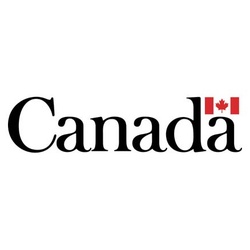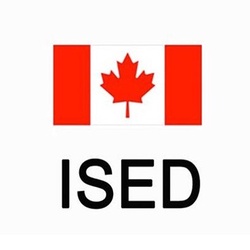Overview: Manufacturing grants and funding in Alberta
Alberta manufacturers have access to a diversified portfolio of non‑dilutive funding that supports capital investment, automation, Industry 4.0, energy efficiency, clean technology, export development, workforce training, research and development (R&D), and scale‑up projects. High‑value programs include Alberta Innovates, PrairiesCan’s Business Scale‑up and Productivity (BSP), Emissions Reduction Alberta (ERA), the Canada‑Alberta Job Grant (CAJG), NRC IRAP for innovation projects, the Strategic Innovation Fund (SIF) for large transformative projects, and federal supports such as SR&ED tax incentives. This directory synthesizes manufacturing grants in Alberta, so organizations can quickly navigate equipment grants for Alberta manufacturers, automation grants in Alberta, technology adoption grants, and export grants for Alberta manufacturers.
Why funding matters for Alberta manufacturers
- Capital intensity: CNC machines, robotics, cobots, welding cells, advanced sensors, additive manufacturing, and packaging lines require significant capex.
- Competitive pressures: Lean manufacturing, quality systems (ISO 9001, 14001), and digital manufacturing (ERP/MES, PLC/SCADA, cybersecurity) are strategic investments.
- Growth opportunities: Export marketing grants, trade show funding, and market expansion assistance help Alberta firms reach North American and global customers.
- Clean growth: Energy retrofit incentives, low‑emission manufacturing grants, and decarbonization funding reduce operating costs and emissions.
What types of funding are available?
Manufacturing incentives in Alberta typically fall into five categories. Understanding these structures helps applicants align budgets and timelines with program rules.
1) Non‑repayable contributions (grants)
These cost‑share programs reimburse an approved percentage of eligible costs up to a maximum amount. They often target equipment upgrades, automation, technology adoption, pilot/demonstration, clean technology, or export marketing. Examples include productivity grants, digital manufacturing grants, and clean growth calls from ERA. Benefits include lower effective capex and improved ROI on plant modernization.
2) Loans and blended finance
Some initiatives combine low‑interest loans with contributions. While not pure “grants,” these instruments can unlock larger projects and complement BDC financing manufacturers in Alberta. When paired with incentives, blended finance supports plant expansion, brownfield redevelopment, or major production line investments.
3) Tax incentives
SR&ED for Alberta manufacturers remains the leading R&D credit, offsetting eligible experimental development, prototyping, and process innovation. Manufacturers also track capital investment incentives and potential accelerated capital cost allowances, which can complement grant stacking. Although not a “grant,” SR&ED affects total project economics and is commonly combined with non‑repayable funding, subject to stacking rules.
4) Training subsidies
Workforce training grants for Alberta manufacturers, such as the Canada‑Alberta Job Grant, offset upskilling for robotics programming, ERP/MES implementation, lean manufacturing, safety training, and apprenticeship funding for Alberta employers. These subsidies help ensure new equipment translates into productivity gains.
5) Export development supports
Export grants for Alberta manufacturers and market expansion funding cover activities like trade show participation, marketing materials, certifications, and in‑market studies. Pairing export funding with production capacity upgrades can accelerate payback.
Priority themes funded in 2025
Programs evolve each year, but several recurring themes shape approvals for 2025 manufacturing grants in Alberta:
- Equipment grants for Alberta manufacturers: CNC machines, welding equipment, machining centers, packaging lines, vision systems, and safety equipment.
- Automation grants Alberta: industrial robotics, cobots, AI in manufacturing, PLC/SCADA upgrades, and industrial automation funding to reduce bottlenecks.
- Industry 4.0 grants Alberta: digital twins, advanced sensors/IoT, ERP/MES funding, cybersecurity grants for manufacturers, and data integration.
- Productivity grants Alberta: lean, quality improvement grants, ISO certification funding, and throughput optimization.
- Clean technology manufacturing grants Alberta: energy efficiency grants for Alberta industry, heat recovery, compressed air optimization, VFDs/high‑efficiency motors, electrification, low‑emission manufacturing, and circular manufacturing.
- Workforce training grants Alberta manufacturers: upskilling for automation, safety training grants, apprenticeship support, and leadership development.
- Export and scale‑up: market expansion funding, trade show funding, and scale‑up grants for new production lines.
Key programs and navigational touchpoints
Manufacturers commonly reference specific program brands when researching eligibility, deadlines, and application forms. The list below highlights widely used options and how they map to typical manufacturing projects.
Alberta Innovates (manufacturing funding)
Alberta Innovates supports innovation, commercialization, prototyping funding, pilot/demonstration funding, and scale‑up. For manufacturers, it can back process innovation, advanced manufacturing adoption, and technology validation. Companies pursuing additive manufacturing, industrial IoT, or AI/analytics in production often explore these streams.
Emissions Reduction Alberta (ERA) funding
ERA periodically runs competitive funding calls for industrial decarbonization, energy efficiency, and emissions reduction in factories. Alberta manufacturers consider ERA for heat recovery, electrification, process optimization, low‑emission fuel switching, and waste‑to‑value projects. These are typically cost‑share, milestone‑based, and require measurable GHG reductions and replication potential.
PrairiesCan funding for Alberta manufacturers
Under PrairiesCan, the Business Scale‑up and Productivity (BSP) program targets technology adoption, plant expansion, and productivity improvements that create jobs and exports. BSP is relevant to mid‑market manufacturing funding in Alberta as it often supports capital and automation initiatives that enable scale.
NRC IRAP funding eligibility for manufacturers
IRAP supports R&D and technology development for SMEs. Alberta manufacturers use IRAP for prototyping, product development, and applied research that precedes commercialization. IRAP can complement SR&ED by funding project stages that involve technical uncertainty and experimental development.
Strategic Innovation Fund (SIF) manufacturing projects
SIF addresses large, transformative investments in advanced manufacturing, clean growth, and industrial innovation. Alberta plants planning significant capacity additions or new technology platforms review SIF for potential support, subject to scale and strategic outcomes like exports, jobs, and environmental benefits.
Canada‑Alberta Job Grant (CAJG) for manufacturing
The CAJG offsets eligible training costs for employees. Alberta manufacturers use it for robotics programming, ERP/MES rollouts, quality/safety certification, and lean methods. Aligning CAJG timelines with equipment commissioning ensures training occurs when it has the greatest impact.
CDAP for Alberta manufacturers (digital adoption)
The Canada Digital Adoption Program helps SMEs adopt digital tools. In a manufacturing context, CDAP can support assessments and implementation planning for ERP, MES, sensors, cybersecurity, and e‑commerce for export marketing. Manufacturers often combine CDAP with equipment grants to deliver end‑to‑end digital transformation.
Export and trade supports (EDC and others)
Export Development Canada (EDC) provides financing and risk mitigation tools for exporters. While not grants, these instruments complement export marketing grants and market expansion funding for Alberta manufacturing firms entering new geographies.
What can grants cover in a factory setting?
Grants for manufacturers in Alberta typically support the following cost categories, subject to program rules and eligibility criteria.
Capital equipment and plant modernization
- CNC machine funding in Alberta, machining centers, lathes, milling, and multi‑axis systems.
- Robotics grants Alberta: pick‑and‑place, welding robots, cobots for flexible cells.
- Industrial automation funding: conveyors, sensors, machine vision, PLCs/SCADA, HMIs, and advanced controls.
- Packaging equipment grants Alberta: filling, sealing, case packing, palletizing, and automated inspection.
- Energy retrofit grants: high‑efficiency motors, VFDs, compressors, boilers, heat recovery systems, and insulation upgrades.
- Plant expansion grants Alberta: building upgrades, new production lines, and layout optimization to increase throughput.
Software and digital manufacturing
- ERP/MES funding Alberta for production scheduling, traceability, and OEE analytics.
- Digital twins, advanced sensors/IoT, and data integration platforms for predictive maintenance.
- Cybersecurity grants for manufacturers Alberta to secure OT networks and mitigate downtime.
- Quality systems: ISO grants, SPC tools, and electronic batch records for regulated sectors.
Training and workforce development
- Workforce upskilling grants Alberta manufacturing for robotics programming, CNC operation, safety training, and leadership.
- Apprenticeship funding for Alberta employers to build talent pipelines.
- Lean manufacturing grants Alberta for continuous improvement, waste reduction, and standardized work.
R&D, prototyping, and pilot/demonstration
- Prototyping funding Alberta for hardware development and product testing.
- Pilot project funding for Alberta manufacturers to validate new processes at scale.
- Additive manufacturing grants Alberta for tooling, fixtures, and rapid prototyping.
- SR&ED and IRAP to offset technical risk during experimental development.
Export, marketing, and certification
- Export marketing grants for Alberta manufacturers, trade show funding, and in‑market research.
- Quality and safety certification funding (e.g., ISO 9001, ISO 14001, HACCP for food processors) to enable market access.
Sector‑specific guidance
Different manufacturing subsectors face distinct drivers and eligible costs. The following examples illustrate common alignments.
Food and beverage processing grants
Food processing grants Alberta often fund packaging line equipment, water efficiency upgrades, energy‑efficient refrigeration, and HACCP implementation. Lethbridge food processing grants can support plant upgrades, while water efficiency grants help processors reduce costs and meet regulatory requirements.
Metal fabrication and machine shops
Fabrication shop grants Alberta and machine shop funding Alberta commonly back CNC machines, welding equipment grants, robotic welding cells, and inspection systems. Cyber‑secure OT networks and CAD/CAM integration can be eligible under digital manufacturing programs.
Plastics, chemicals, and wood products
Programs may support tooling, extrusion upgrades, resin handling efficiency, emissions control, and circular manufacturing projects such as recycling streams. Wood products manufacturing funding in Alberta can include optimization, dust collection efficiency, and advanced nesting software.
Aerospace and advanced manufacturing
Aerospace manufacturing grants Alberta target precision machining, quality certification, additive manufacturing, and supply chain resiliency. Advanced manufacturing funding Alberta often backs digital twins, sensors, and AI in manufacturing for high‑tolerance processes.
Geographic focus inside Alberta
Keyword searches often include city names. While major programs are provincial or federal, municipal and regional agencies may provide complementary supports.
- Calgary manufacturing grants: productivity and export initiatives, municipal facilitation, and cluster supports.
- Edmonton manufacturing funding: innovation ecosystems, workforce partnerships, and industrial land services.
- Red Deer, Lethbridge, Medicine Hat, Grande Prairie, and Fort McMurray: region‑specific initiatives, utilities rebates, or site‑readiness supports may complement provincial/federal grants.
Eligibility essentials
Every program defines explicit eligibility criteria. Manufacturers should confirm the following early:
- Corporate status and location in Alberta; number of employees and revenue range (SME vs mid‑market vs large).
- Project fit: equipment purchases, automation, clean technology, training, export, or R&D.
- Technology readiness level (TRL) for innovation projects.
- Environmental performance for clean growth streams (GHG reductions, energy intensity, circularity).
- Financial capacity and matching funds for cost‑share programs.
- Stacking rules: how SR&ED, provincial grants, and federal contributions interact.
- Reporting and outcomes: jobs, exports, productivity, and emissions metrics.
- Timelines: eligibility of costs (incurred after approval), project start/end dates, and milestone schedules.
How to apply for manufacturing grants in Alberta
A disciplined process improves success rates for non‑repayable funding and matching grants.
Step 1: Define the business case
Quantify bottlenecks, downtime, scrap, OEE, and energy intensity. Link equipment grants and automation funding to measurable productivity, quality, safety, or emissions outcomes.
Step 2: Map programs and stacking
Create a matrix of Alberta Innovates, PrairiesCan BSP, ERA, IRAP, SIF, CAJG, CDAP, and sector‑specific opportunities. Identify cost‑share percentages, caps, deadlines, and eligible cost windows.
Step 3: Build a compliant budget and schedule
Align purchase orders and commissioning with program rules (e.g., costs eligible only after approval). Separate capex, software, training, and consulting line items to match what each program reimburses.
Step 4: Prepare documentation
Common items include project plan, vendor quotes, cash‑flow, financial statements, environmental/energy analysis, export plan, and training curricula. For clean technology grants, include baseline data and forecasted GHG savings.
Step 5: Submit and manage approvals
Address evaluation criteria with precise metrics. After approval, implement diligent tracking: invoices, timesheets, training records, energy data, and KPI dashboards. Plan for site visits and post‑approval reporting requirements.
Budgeting, matching funds, and stacking rules
Cost‑share funding requires applicants to contribute a portion of project costs. Manufacturers often combine:
- Non‑repayable contributions (e.g., productivity or clean growth grants)
- Training subsidies (CAJG)
- Tax incentives (SR&ED)
- Export supports (trade show funding)
Always verify stacking limits and whether SR&ED claims must net out prior contributions. Build contingency into budgets for ineligible costs and timing gaps between reimbursement and cash outlay.
Timelines, deadlines, and success factors
- Deadlines: Some programs accept continuous intake; others run competitive calls with fixed deadlines. Track Alberta manufacturing grants 2025 deadlines early.
- Processing time: Expect several weeks to months; complex or competitive streams may take longer.
- Readiness: Pre‑approved vendor quotes, facility drawings, training plans, and baseline metrics strengthen applications.
- Risk and impact: Projects that reduce risk, deliver strong productivity gains, create jobs, increase exports, or cut emissions typically score higher.
Compliance, reporting, and audits
Post‑approval reporting requirements can include progress reports, KPI tracking, site verification, and final claims. Establish internal controls to manage documentation, change orders, and deliverables. For energy and emissions projects, maintain metering and M&V data aligned with the approved methodology.
Common pitfalls and how to avoid them
- Starting work before approval when costs are ineligible.
- Weak problem statements lacking baseline data or KPIs.
- Overlooking cybersecurity and safety costs that could be eligible.
- Misaligned timelines across multiple funding sources.
- Incomplete supporting documents or missing signatures.
- Underestimating reporting workload after project completion.
Special topics for Alberta manufacturers
Lean and quality improvement grants
Productivity grants in Alberta frequently recognize lean training, layout optimization, SMED, and quality improvement. Pair training subsidies with automation to maximize ROI.
Cybersecurity and OT resilience
Grants for cybersecurity upgrades in manufacturing Alberta address network segmentation, secure remote access, and threat monitoring. Cyber‑secure OT reduces downtime risk and protects IP, a growing priority for export‑oriented firms.
Energy efficiency and decarbonization
Energy retrofit grants for Alberta factories fund compressed air optimization, variable speed drives, high‑efficiency motors, heat recovery, and electrification. Low‑carbon manufacturing grants in Alberta may also back fuel switching, process intensification, and renewable heat or microgrids.
Circular economy and waste reduction
Recycling and circular manufacturing grants support waste reduction, scrap reuse, and closed‑loop materials. For plastics and food processors, programs may fund sorting, washing, and by‑product valorization.
Equity and regional access
Indigenous‑owned, women‑owned, newcomer‑owned, rural, and northern Alberta manufacturers can explore tailored supports or scoring advantages. Many programs encourage inclusive hiring, apprenticeships, and community benefits.
Building a funding roadmap
A funding roadmap sequences projects over 12–36 months:
- Phase 1: Diagnostics (energy audit, digital assessment), quick‑win retrofits, training via CAJG.
- Phase 2: Automation, ERP/MES, robotics/cobots, and quality certification.
- Phase 3: Plant expansion grants, clean growth projects via ERA, and export market development.
Integrating PrairiesCan BSP for scale‑up, IRAP for innovation, and SR&ED for R&D creates a balanced portfolio that compounds competitiveness.
Conclusion: Turning grants into measurable outcomes
Manufacturing grants in Alberta are designed to accelerate technology adoption, improve productivity, reduce emissions, and grow exports. By aligning equipment and automation projects with credible KPIs, leveraging training subsidies, and considering clean technology and export supports, Alberta manufacturers can reduce risk and speed execution. A disciplined process—eligibility mapping, compliant budgeting, and precise reporting—turns non‑repayable funding into durable operational advantages.

































